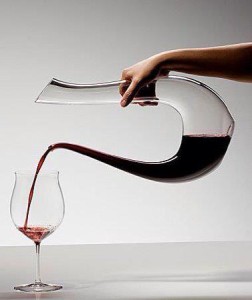We are increasingly becoming used to super-sized portions. Smaller portion size in France is universal, from the food you buy in the supermarket to the bread in the boulangerie to what is served in cafes and restaurants. French portions are about one quarter to half the size of ours. This extends to hospitality. As an invited guest in someone’s home, I noticed the food portions were positively dainty. At one relaxed gathering, I was offered sumptuous food ranging from fresh salads, seafood and potatoes to dried meats and beautiful desserts – on a side plate. I asked my brother, who has lived in France for 20 years, whether this was the norm. He replied that while offering small plates wasn’t a deliberate choice, it was considered socially acceptable. Dinner hosts doing the same thing here may be regarded as stingy.
2. A different mindset
It’s easy to imagine the French obsess about la gastronomie and how much they should eat. In fact, they don’t. The traditional French mindset is that you should not deny yourself anything on your plate, but everything should be balanced and in moderation. Put simply, they don’t go on a big guilt trip about food. It is un plaisir! Always. Compared with the hand-wringing that often occurs here after a “big weekend” of overindulging in food and alcohol, followed by guilt-ridden calorie-counting and cutting back on fats, sugars, beers and carbs, it’s a very liberating way to live.
3. Less dairy
While the French love their camembert, there are fundamental differences in how much dairy the French consume compared with us. What struck me is how much smaller coffees are in France and how much dairy we unthinkingly consume via our love of large lattes. Sure, you can order a cafe creme (the closest to a flat white) in France but cup sizes are far smaller. And while many may think Australia’s love of coffee is a growing nod to European sophistication, grabbing a takeaway coffee is not nearly as popular in France as it is here.
Many French drink either an espresso without milk or a noisette, which is a bit like a piccolo. But again, there’s a difference. Most cafes will offer a noisette with just a dash of milk already in it and a small jug of milk on the side, for you to add as much or as little milk as you like.
The French are happy to eat cheese every day but servings are usually no more than 40 grams.
4. Three meals a day
In the French home, discussions about what to eat are based on what is needed to buy on the day, if time permits. The emphasis is on fresh and seasonal. The French would never want you to go hungry but overeating is frowned upon because it is unnecessary. Skipping meals is a big no-no and not having lunch is considered uncivilised. You won’t go hungry on three balanced meals a day and the French operate on the basis that there is always more where that came from, so there is never any need to panic. A big difference is there are no blowouts or binges followed by starvation. Eating after you have reached a level of sated comfort is rare. I did not feel hungry once for the month that I was there – and I lost five kilograms.
5. Snacking
Snacking isn’t French. Munching away on biscuits, chips, crackers, nuts, cake or chocolate bars between meals just isn’t done. Eating in the street as you walk along or grabbing something on the run in your lunch hour is far less common than it is here. As often as possible, monsieur and madame want to sit down to their meal, without distractions, and eat thoughtfully.
6. Bread
We tend to think lovingly of those crusty, hot French baguettes. And while it’s guaranteed you will see a Frenchman walking along with a fresh baguette on his way back to la maison, bread is also consumed differently. Bread is something to have at meals to mop up flavours – without butter – but it is not the main event, nor is a sandwich de rigueur for lunch every day. Bread is not on the table with every meal, while a mixed salad or steamed vegetables, is.
7. Takeaway
Takeaway is not part of the lifestyle. The French still, by and large, prefer to cook their own meals. But if they decide not to cook, they would rather eat out, even if it’s a simple meal at a cafe in a pleasant setting. If you do see the French going to their local Chinese (which tastes nothing like the great Asian food you get here; they don’t have the same spices, Asian vegies and sauces) or grabbing a pizza, it is an exception rather than the rule. Again, the size of takeaway containers is significantly smaller.
8. Junk food
Of course fast food exists in France – the usual suspects are there. A big difference is it isn’t a part of the national psyche, nor do the French have an affection for “Maccas” or the like. Junk food is considered a treat or a convenience, not a meal substitute. Again, portion size is important. One local told me she did like French fries from time to time and would order a small size as a treat. Upsize to include a burger and a soft drink? Non, merci.
Nor will you find huge tubs of popcorn, choc-top ice-creams and soft drinks being sold at all cinemas, certainly not in art-house ones. If they are sold, it’s far more discreet. It is socially frowned upon to be seen (or heard) munching away on a big packet of chips while taking in a film. Soft drinks aren’t offered at schools nor are they taking up stacks of room in the French fridge. Water, flat or sparkling, is on the table at every meal.
9. Body image
If you go to the beach in France, you will see all shapes and sizes from lean to tubby to obese. But rather than having to hide the rolls of fat, it’s acceptable to show it, even in a bikini, and not be given the once over.
The overwhelming sense of guilt or shame (hide your fat!) isn’t ingrained in the national psyche and that, in its own way, gives people a greater choice. The thinking is: be the size you are, or decide to change, without societal pressure reinforcing the fact there is something “wrong” with you. That’s very freeing.
Nor is it a part of the language to talk about how many grams of chocolate you ate. You are not going to hear two French women chatting about how they gorged themselves at the weekend and are now back on their diets. I overheard two women talking about their wardrobe and what clothes suited them and one of them said, “Je suis grande” (“I am big-boned”) but there was no sense of embarrassment or concern that her friend would judge her harshly. The feeling is it is good to find clothes that suit your body shape and transform you into a better, more stylish version of yourself.
10. Exercise
It’s no secret we love our sport but the French are a sport-loving nation, more so than we give them credit for. Sure, we know they do the annual Tour de France, but did you know they won more medals than Australia at the 2012 London Olympics? They came seventh overall, we came 10th. The French aren’t loungers: staying home to watch videos for an afternoon while eating a bowl of chips and downing soft drinks is not going to happen. They like to move – mountainbiking, handball, swimming, cycling – and they have the gold medals to prove it.
What’s on their plate
If you think the French gorge themselves on croissants and pain au chocolat for breakfast every day, think again. A typical breakfast might include chopped seasonal fruit and a 125 gram tub of unsweetened, plain yoghurt, with a couple of small slices of toast and jam. Bread slices are smaller than the standard Australian loaf. The right mix of protein and carbs is important. Cereals are shunned by adults.
Lunch might include a fresh salad, a small serving of lean meat (the size of your palm) or fish and a rice pudding dessert, or the aforementioned 40 gram piece of cheese with a bit of bread.
Dinner could be grilled lean meat, lots of seasonal vegetables and a piece of fruit.
As for something like bacon and eggs, the French consider it an “exotic” meal to be eaten rarely, if at all.
Le good drop
The French, like many Europeans, generally like to dine about 8.30pm, especially during summer. But during late-night strolls there is seldom that nervous expectation that you might stumble across a bunch of noisy off-their-faces bon vivants spilling out of a pub.
Although the French drink more alcohol than Australians – 12 litres a person a year, compared with our 10 – they don’t like to “knock a few back” quickly. One night I watched a young Frenchwoman at a cafe with a generous glass of red and a small plate of canapes sip her wine for at least an hour before she paid and left.
Queues of people buying cartons of beer, pre-mixed drinks or bottles of wine from a bottle shop on a Friday night isn’t done. Alcohol is sold in supermarkets and specialty wine shops. Culturally, there seems to be less enthusiasm about having a “big night” with a serious hangover scheduled for the next day.
At a restaurant, the waiter won’t ask if you want a second bottle of wine during an intimate dinner with your beloved. This would be regarded as excessive, though a cognac after dessert with coffee is fine. It’s different if you are in a group, but even then, rowdy is not a word that comes to mind when the French imbibe.
A glass of wine at home at lunch or dinner – not necessarily both – is acceptable but again the approach is different. There is much rejoicing over a great “find” – a lovely wine from a good region – to savour.
 Yves Calmette has a unique approach to nutrition that incorporates time-tested traditional nutrition philosophies, the French Paradox theory and food wisdom supported by modern research. A born and raised Frenchman, the art de vivre and art of eating and the principles of food as medicine were the pillars of his upbringing, built on a long family heritage – his great grandmother Marguerite was a popular cook and healing practitioner during the 1920s.
Yves Calmette has a unique approach to nutrition that incorporates time-tested traditional nutrition philosophies, the French Paradox theory and food wisdom supported by modern research. A born and raised Frenchman, the art de vivre and art of eating and the principles of food as medicine were the pillars of his upbringing, built on a long family heritage – his great grandmother Marguerite was a popular cook and healing practitioner during the 1920s.



